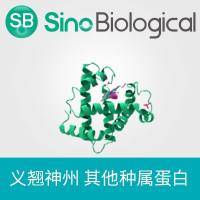Detection of Listeria monocytogenes by the Nucleic Acid Sequence-Based Amplification Technique
互联网
540
The rapid detection of foodborne pathogens such as Listeria monocytogenes requires ultrasensitive techniques that give measurable responses with low numbers of the target bacteria in food samples or enrichment cultures. Although a number of approaches are possible for detection of low levels of target bacteria, including enzyme immunoassay (EIA) and nucleic acid probe hybridization, perhaps the most efficient approach from the viewpoint of detectability and specificity are the nucleic acid amplification techniques. Nucleic acid amplification targets specific nucleotide sequences within the bacterial genome and raises the number of copies of the region of interest to levels that are detectable by conventional means (e.g., agarose gel electrophoresis, DNA probes). A well-known example is the polymerase chain reaction (PCR) technique, which amplifies target DNA sequences by a mechanism involving hybridization of two oligonucleotide primers to opposite strands flanking the target region, followed by a repetitive series of cycles involving template denaturation, primer annealing, and the extension of primers by a DNA polymerase, typically the thermostable Taq polymerase, which enables the use of an automated thermal cycling device in this process. The amplification in a typical PCR process can result in a million-fold increase in the number of target sequence copies after 20 cycles (1 ).



![DKFZ-PSMA-11,4,6,12,19-Tetraazadocosane-1,3,7-tricarboxylic acid, 22-[3-[[[2-[[[5-(2-carboxyethyl)-2-hydroxyphenyl]methyl](carboxymethyl)amin](https://img1.dxycdn.com/p/s14/2025/1009/171/0405943971658126791.jpg!wh200)





